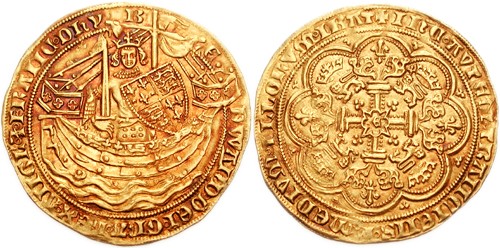
September 21, 2016, by Harry Cocks
The Medieval Credit Crunch
In medieval England, credit and debt united all classes, from husbandman John Bygge of Stortford, Hertfordshire, who had bought £6 of goods from London haberdashers and fishmongers, to the greatest magnates in England such as the Earl of Shrewsbury, who owed money to a London mercer. Even peasants like the shepherd John Rede of Soham, Cambridgeshire, who at his death was owed 31s 11d in unpaid debts, could be on the wrong end of similar transactions. One of the most famous debtors of the period was Geoffrey Chaucer (see Blog of April 7 2015) who was sued several times over his debts to London grocers and innkeepers. In his new book (see link), Richard Goddard of Nottingham’s History Department argues that in the medieval economy credit and debt were familiar and vital, and that “credit was a pivotal component of English domestic trade.” He also identifies a medieval “credit crunch” between about 1400 and 1450 that led to a contraction of trade and lending, thereby adversely affecting the whole economy.
Using the records of the Statute Staple, a royally sanctioned debt registration system which provided for the efficient recovery of defaulted debts through what were known as Staple courts, Dr Goddard has reconstructed the lending practices of the period. Under the Statute of Staples of 1353 merchants were obliged to centralise and regulate trade, and to establish a body (Merchants of the Staple) who enjoyed exclusive privileges over that trade. All leather, lead and wool destined for export had to be brought to a staple town for sale to exporters. The mayor of each staple town where these transactions could take place had power to hear mercantile pleas, including those relating to debt and broken contracts. Unlike common law, the rulings of staple courts were internationally recognised, not to mention cheaper and quicker than most English law courts. Dr Goddard’s book is based on 16 of these courts from Boston, Lincolnshire to Winchester in Hampshire.
He shows that though there was an economic boom following the Black Death of the mid-fourteenth century characterised by high levels of lending, high wages and rising prices, this was followed in about 1400 by a 50-year depression and a shortage of coinage resulting from the lack of silver. As a consequence, Staple lending was greatly reduced, undermining domestic trade. This made it harder to access commercial credit. In these circumstances, the curious actions of certain merchants become more explicable. A typical agreement of this period was that entered into in 1423 by Robert Belle, a merchant of Newcastle-upon-Tyne, who travelled nearly 500km to London to borrow £40 from the draper William Stockdale, to be repaid eight months later. But why did he, like so many of his contemporaries, go all the way to London in 1424 to borrow £40 when he could have done so in Newcastle using the Staple debt court? The answer lies in the restricted nature of credit at the time, which meant that Belle was forced to go to London to access what was available.
Richard Goddard, Credit and Trade in Later Medieval England (Palgrave, 2016)
http://www.palgrave.com/gb/book/9781137489852
No comments yet, fill out a comment to be the first

Leave a Reply